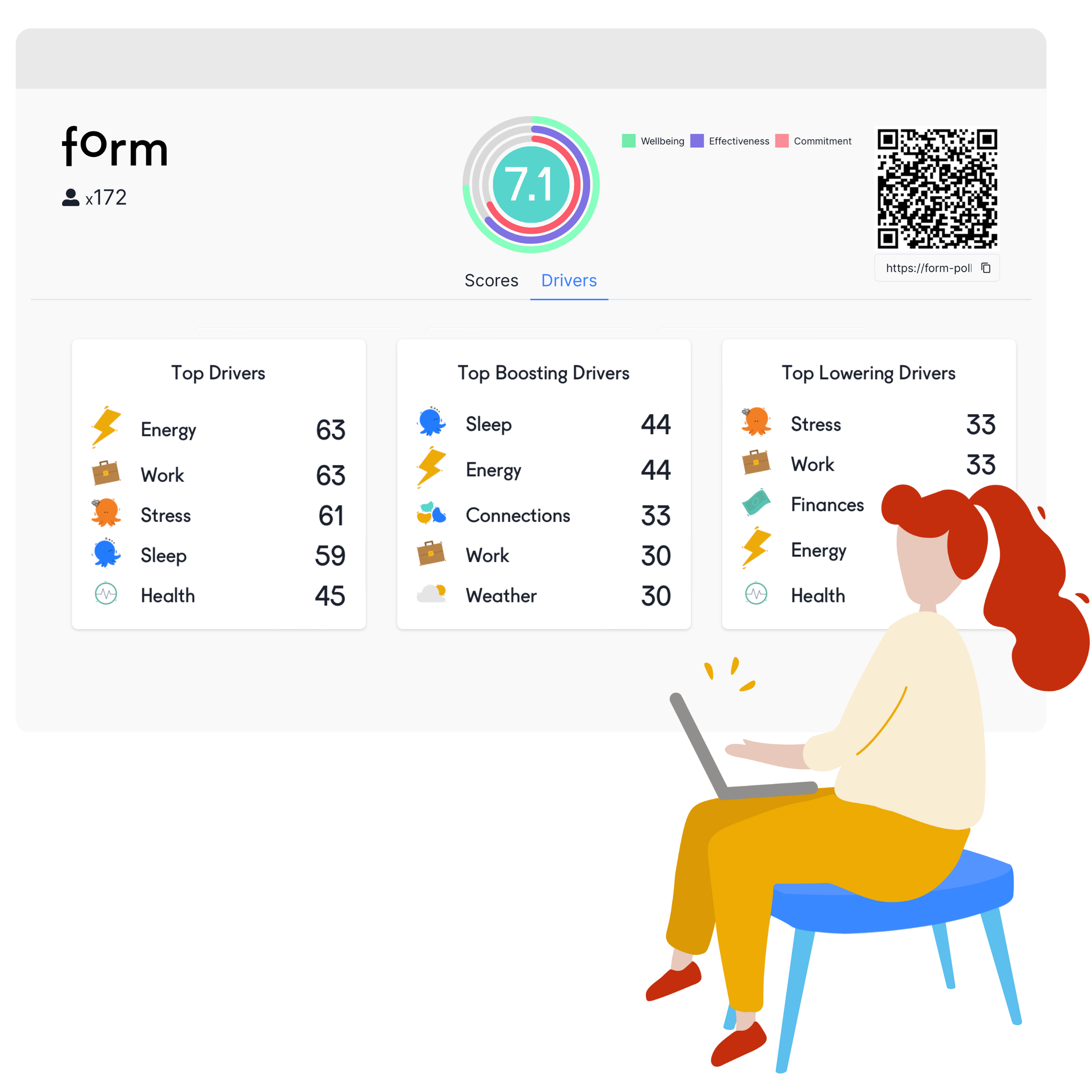Why are we pivoting FormScore?
It takes a degree of courage to decide to pivot your tech product. This is because the act itself implies that your current product, which you have poured your heart, soul and investors’ funds into, is not good enough. Or, more accurately, is not a fit for the target market.
I am super proud of what we have achieved so far at FormScore. We have a great wellbeing solution that is easy to use, gives employers helpful data and, for those that engage, helps people become more intentional about managing their wellbeing and a means of better supporting friends and loved ones. We have received great feedback along the way.
However, I don’t think our wellbeing solution, as it stands, is going to change the world.
I have also seen some worrying trends in regards to employers' wellbeing budgets that I think are relevant here.
In this brief article, I lay out some of the challenges that we (and other players) face and explain where we are pivoting to and why.
In summary, here are the key factors driving our pivot:
Wellbeing is still seen as a ‘nice to have’, discretionary benefit by many employers and we better need to demonstrate the link between wellbeing and performance.
Current digital wellbeing solutions struggle with engagement and retention of employees.
There is an opportunity to help employers navigate the discussion sound hybrid working with the use of data.
Traditional engagement surveys capture a point in time, retrospective looking and provide managers with outdated data.
Employees remain distrustful as to what their wellbeing data will be used for.
We need to better demonstrate the link between wellbeing and performance
We know that wellbeing is an essential component of high performance. There is plenty of research to back this up. Here is a good report from UK Gov in 2014. We know that good wellbeing also translates to better company performance as described in this Forbes article. However, whilst data from Gallup estimates the global cost of turnover and lost productivity due to employee burnout alone to be $322bn, we have seen a worrying trend of organisations slashing wellbeing budgets as times get tough. I would even describe some of these organisations as ‘forward thinking’ on employee wellbeing prior to the cuts.
State of the Global Workplace 2022 Report. The voice of the world’s employees. Copyright © 2022 Gallup, Inc. All rights reserved.
My sense is that we need to demonstrate the link between wellbeing and performance at the team and organisation level.
The new FormScore product does this in real-time and helps managers understand the factors that are driving performance readiness. We invite people to reflect on how they are feeling about their wellbeing, effectiveness and commitment to the team and think about the factors that are driving performance readiness from both a work and personal perspective.
Current wellbeing solutions are not working for everyone
Inspiring ALL employees to engage with their wellbeing is a challenge. Inspiring employees to retain interest in digital wellbeing solutions is like trying to climb Mount Everest - many people will not get beyond base camp. There are a lot of really good solutions out there (as well as a fair amount of, shall we say, less-good ones). Most, if not all, struggle with engagement and retention. I haven’t met many wellbeing leaders who are truly happy with the usage of their digital solutions. The FormScore wellbeing product is no exception to this.
Most products rely on the need for individual employees to build a wellbeing habit. This is difficult to do in a workplace where many colleagues feel that wellbeing and mental health is “not relevant for me”.
The new FormScore product is built for managers to run in their regular meetings and gives real-time feedback, insights and suggestions as to what to do about the factors that are affecting the performance readiness of their teams.
By making managers responsible for driving engagement and helping them respond to the results, we believe we can move a good way in solving the engagement challenge. At the same time, we will still give employees helpful insights and resources in relation to their elements of performance readiness.
There is an opportunity to use data to better understand the impact of hybrid working
There appears to be a natural tension between employees and senior management in many organisations on the issue of hybrid working. Management want people back in the office more and employees are protecting their newfound flexibility. However, there does not appear to be a huge amount of data to back any of this up. There is a delicate interplay between a number of drivers affecting performance including flexibility, work-life balance, recovery and stress management, social connections, ability to learn, relationships and more. Real-time data to help both the individual and the manager could be very helpful.
We have built the new FormScore product to capture where people are working so we help employees, managers and the organisation understand some of the nuances of where people feel most ready to perform and the associated influencing factors.
Capturing this data will allow both employees and the organisation to make a more informed decision on ways of working.
There is an opportunity to provide managers with real-time data overlaid by company and world events.
Think about the annual engagement survey. It will take a big push from managers to get completed. The data is then analysed for a few weeks. It is then disseminated back to managers who might get around to looking at it and sharing with the team after a few weeks. There is some great stuff in the results but it already feels a little bit dated.
Yes, pulse surveys can help fill in the gaps but we see a different way of assessing the wellbeing, effectiveness and engagement (or commitment) of employees. This can be done in a continuous way with low effort required from the employee and a useful resource available to them.
FormScore allows the manager and leadership to overlay real time performance readiness data with company and world events.
This is a no-brainer. Introduce a new wellbeing benefit? How does this actually impact people’s wellbeing and performance? Pay reviews: what is the impact on commitment to the organisation? Transaction? Restructuring? CEO announcement? The list is only limited by your imagination.
Employees still remain distrustful of what an employer will do with their wellbeing data.
FormScore (like a number of other wellbeing solutions in the market) never share individual data with the line manager, HR or the company at all. Rather we aggregate anonymously to provide insights at the team and org level yet retaining confidentiality of the employee. We all work hard during our respective onboardings to reassure people of this.
Do employees believe us?
Some do. Some don't.
No matter how hard we try, there will always be a dose of scepticism from a cohort of employees. This level of distrust is probably quite a good barometer of company culture. In some organisations, no matter how much I share my own story and the fact that FormScore derived from a tool given to me by a therapist, there will always be those who remain distrustful.
There is a simple answer to this.
Create a product that doesn’t require the employee to give up any of their data. This is exactly what we have done with the new FormScore Product.
If an employee does not want to create an account, get their score history and access personalised content, they don't have to but can still contribute to the team analytics. If they are trusting and want more, then they simply have the option to sign up. Similarly, if the organisation would prefer that individuals do not create accounts and give up identifying data then we can turn this feature off which can be helpful in certain territories.
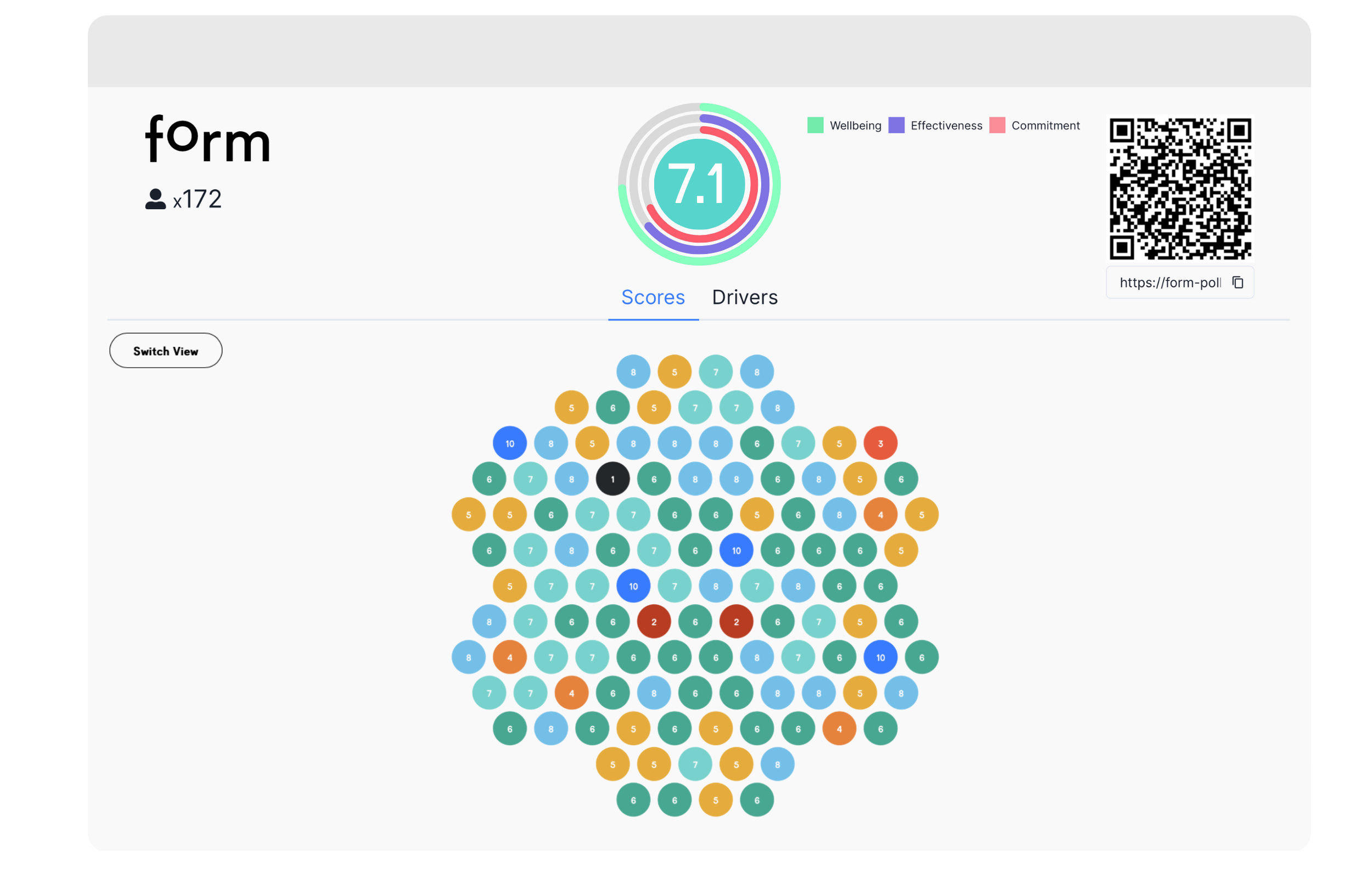
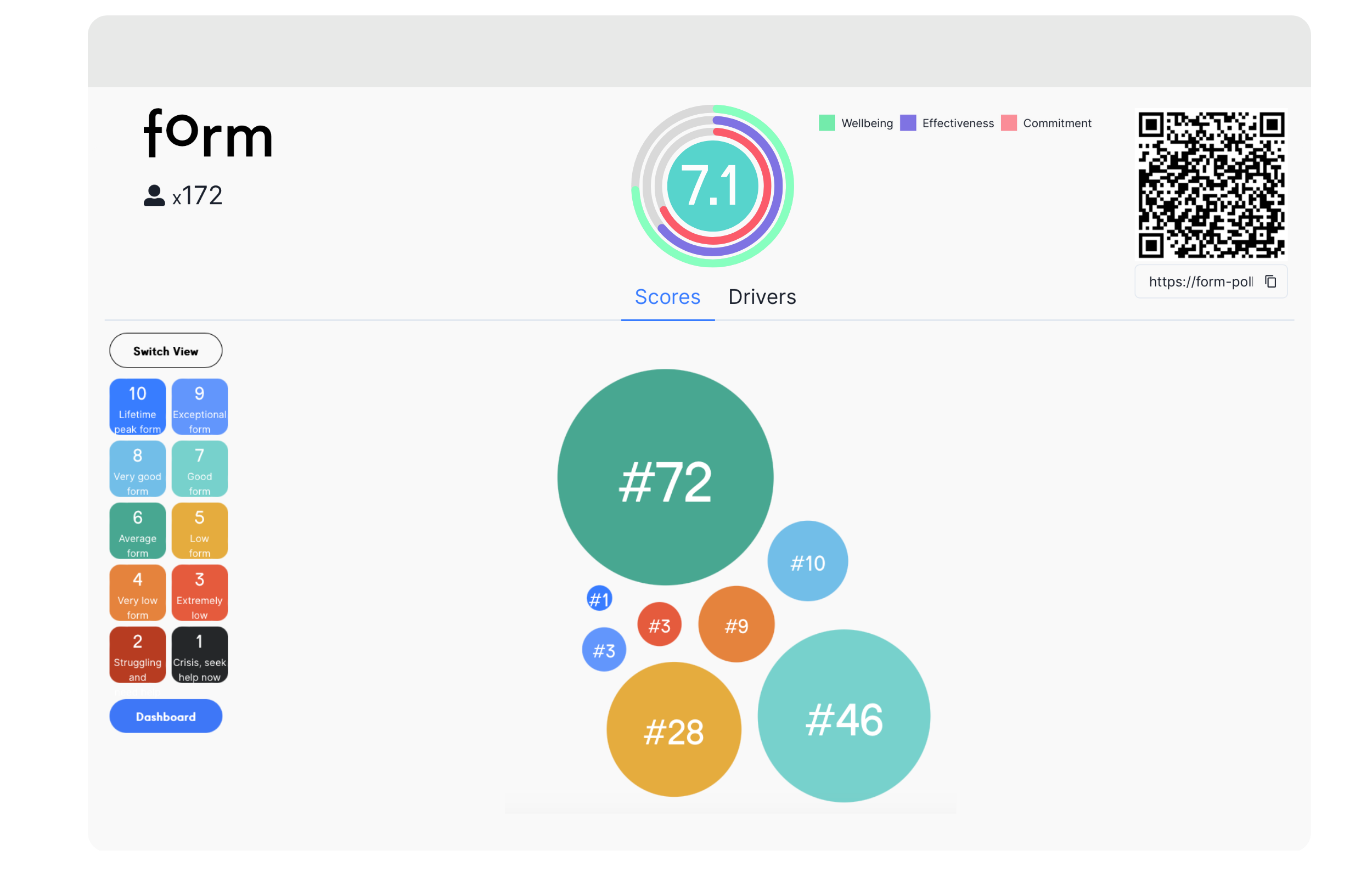
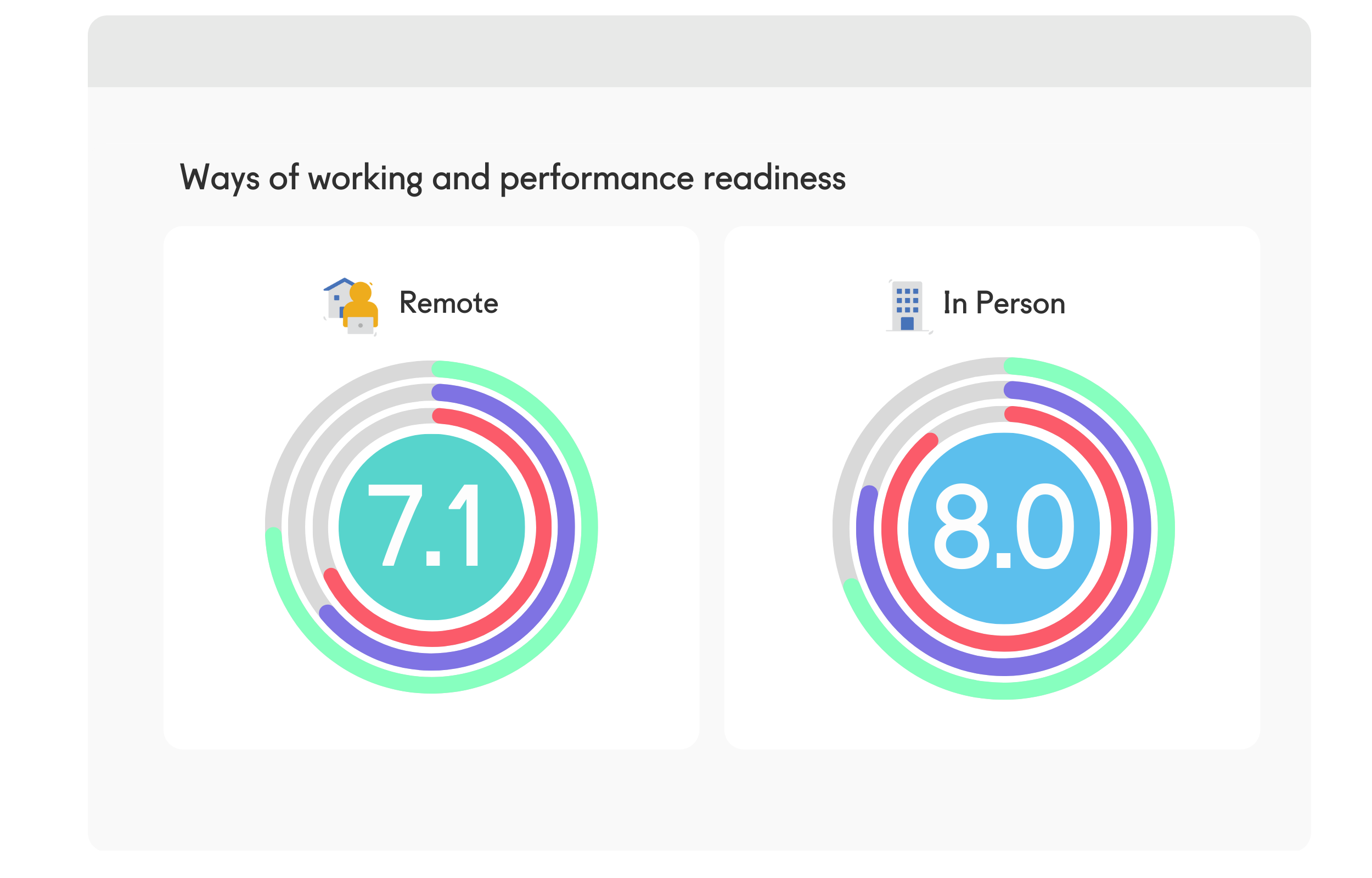

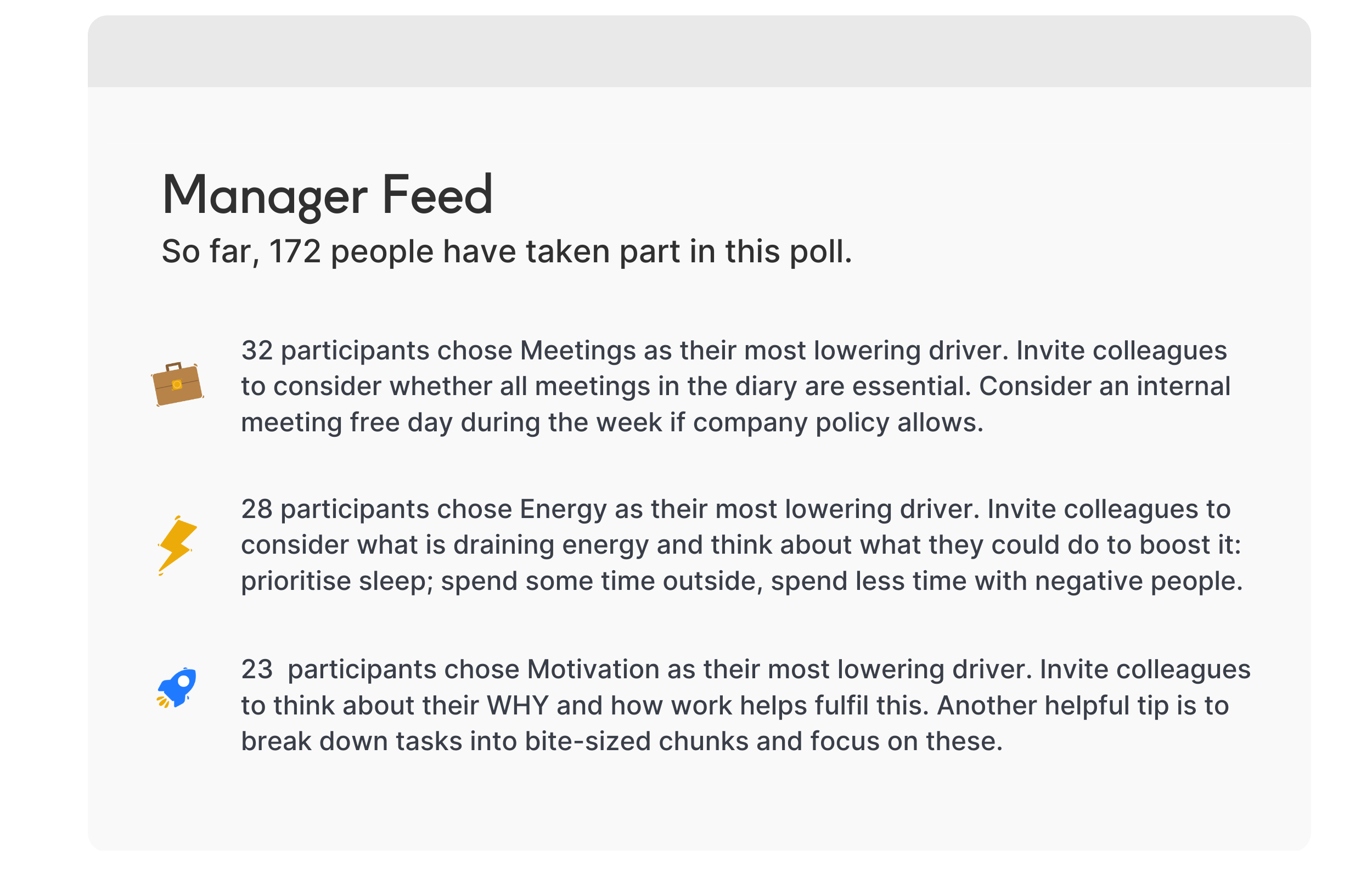
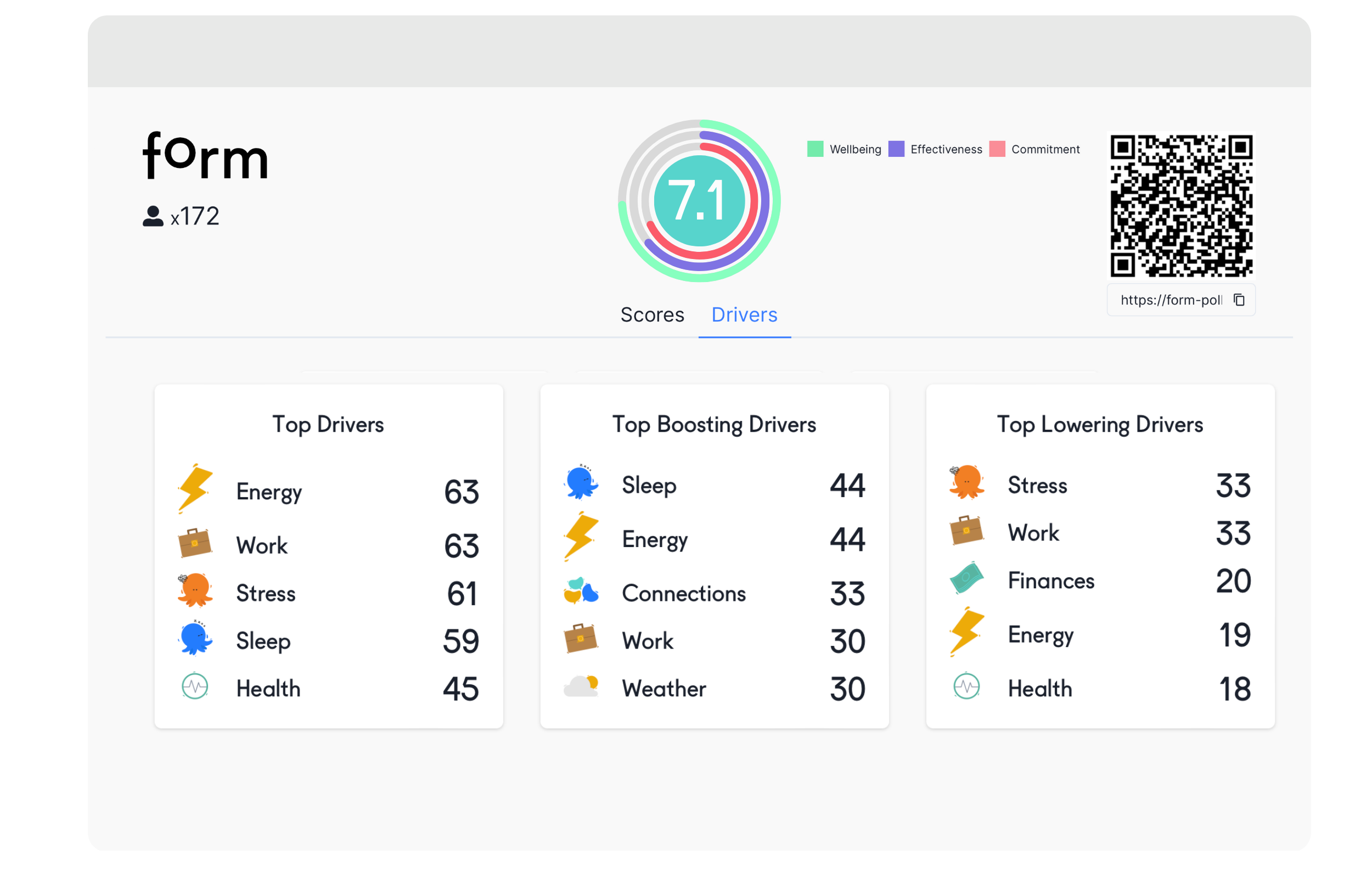
Final thoughts
We decided to pivot the FormScore product to address some of the problems we see our clients were faced with. In doing so we have identified a number of opportunities to tap into.
Will it be successful? Only time will tell but initial validation and feedback is very promising.
I am proud of what we created with FormScore. I am even prouder of where we have pivoted it to.



